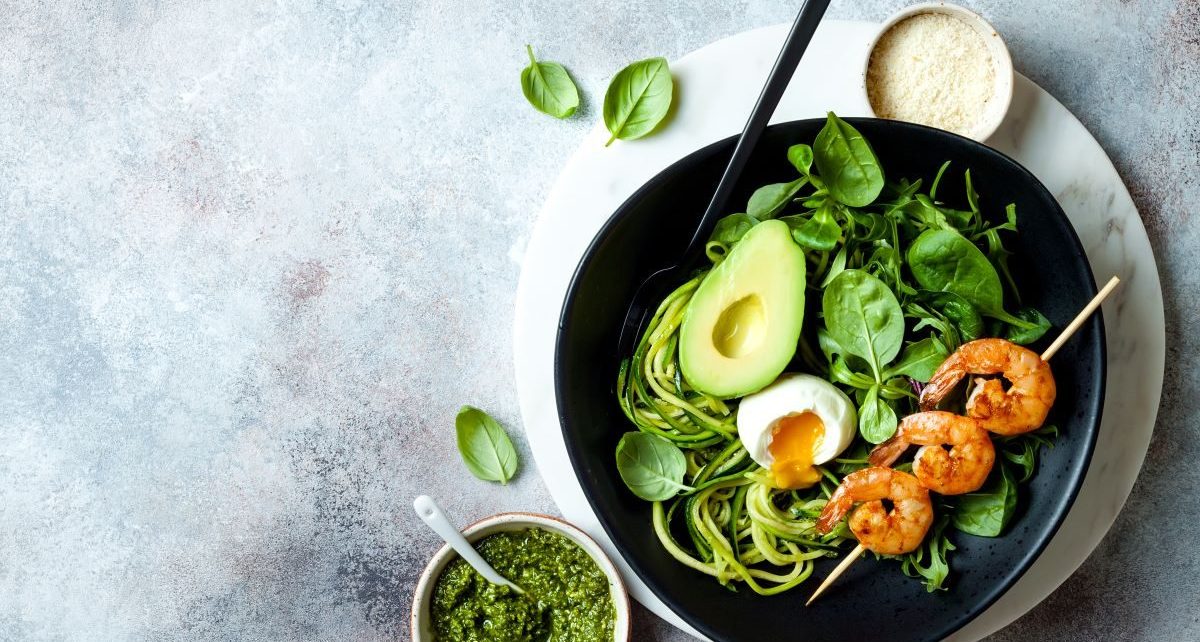Top 3 Most Craved Plant-Based Seafood Alternatives

Seafood is an important part of the human diet and U.S. consumers love it. According to data from the most recent National Oceanic and Atmospheric Administration (NOAA) “Fisheries of the United States” report, American consumers ate 16.1 pounds of seafood per capita in 2018.
Based on the NOAA report, the National Fisheries Institute compiled its top 10 most consumed seafood species list and found the top three favorites of U.S. consumers are shrimp, salmon, and canned tuna. Shrimp is a fan favorite every year and has topped the list since 2007. It accounts for 25 percent of annual seafood consumption, indicating the average consumer eats a little more than four pounds of shrimp per year.
Consumer Interest in Plant-Based Seafood Alternatives Begins to Rise
Most consumers incorporate seafood into their diets because it’s seen as a rich source of protein containing essential amino acids, fats, vitamins and minerals. However, as the spotlight begins to shine on the potential negative effects seafood has on human health, as well as the environmental damage and lack of sustainable sourcing with fishing, some consumers are turning their attention to plant-based seafood alternatives.
Maiko Van Der Meer, co-founder of plant-based firm Novish, said people have heard about the animal welfare, health, methane and antibiotic issues surrounding meat consumption. But when it comes to issues surrounding seafood, people are much more in the dark.
“What you see around seafood is there is a lot of issues like overfishing, bycatch, heavy metals, the antibiotic use in farming, but they are less known to people and it will take a while until people realize it would be a good idea to also eat less fish and maybe look at some alternatives,” he said.
In March, Netflix released Seaspiracy, a film that claims it set out to document the harm that humans do to marine species. Following the release of the film, directors Ali and Lucy Tabrizi secured over 100,000 signatures on their petition to protect 30 percent of the oceans by 2030. Two months later their petition has gained more than 660,000 signatures, which means their message is getting out to the masses.
Since the film’s release in more than 30 countries, celebrities and organizations have called on their followers to stop eating fish. Vogue also published a feature in March detailing six “eye-opening” lessons it learned from Seaspiracy, saying it will “change your thoughts on seafood forever.”
The increase in consumer awareness is leading to the rise in demand for plant-based seafood alternatives. In early March, we explained why plant-based seafood is a white space in the market and development in this category is in its infancy.
Today, plant-based seafood accounts for just $9.5 million or 1 percent of the total plant-based category. But the market opportunity is significant as data from the Good Food Institute and SPINS estimates that for plant-based seafood to reach just 1 percent share of the seafood market is worth $141 million.
To help our customers capitalize on this opportunity, we have created a list of the top three most craved plant-based seafood alternatives.
1. Shrimp
Because shrimp is the most popular marine species consumed by U.S. consumers, we consider plant-based shrimp to be one of the top plant-based seafood flavors. At Synergy Flavors, we have a customizable shrimp flavor that pairs nicely with a grill or fried flavor. Depending on the base or substrate and what off-note it leaves behind, we would add a flavor masker to neutralize the less desirable taste before adding the shrimp flavor.
New Wave Foods has created a seafood alternative made from seaweed and mung bean protein and plans to add plant-based lobster, scallops and crab later this year. The company only serves its frozen, pre-cooked shrimp to QSR and full-service restaurants, healthcare facilities, colleges and universities.
Fuji Oil Co has been granted a patent for a shrimp meat substitute used in the manufacturing of processed food such as fried shrimp. The shrimp meat substitute is prepared by extruding and texturing a dough mix that includes plant protein and egg yolk under normal pressure.
2. Salmon
The second most popular seafood species for U.S. consumers is salmon. Our customizable salmon flavor delivers those ocean, meaty and fatty notes commonly associated with the animal-based protein. Synergy’s salmon flavor is also nicely paired with our grill flavor or fried skin note. With substrates made from seaweed, soy and pea, a masker is often needed to neutralize off-notes and let the salmon flavor shine.
ZeaStar’s frozen Zalmon Sashimi is a vegan alternative made entirely from vegetables like seaweed to mimic the taste and texture of fish. Sophie’s Kitchen also offers a Vegan Smoked Salmon that is described as having a plant-based wood smoked seafood flavor. The product was on display at the Fine Food Australia 2019 tradeshow in Sydney.
British start-up Ima debuted its vegan salmon and dill sushi roll made from marinated carrots in June 2019. The product is only available at Planet Organic, the UK’s largest certified organic supermarket.
The New Butchers claims to be the only plant-based company in Brazil with a version of salmon. The start-up used jackfruit fiber to mimic meat fiber and began research and development of flavor and texture in 2017.
3. Tuna
Canned tuna was one of the top three most consumed seafood species on the National Fisheries Institutes’ top 10 list, and one of the more developed plant-based seafood flavors. At Synergy Flavors, we offer a canned or raw tuna flavor that is representative of the animal protein and customizable to our customers’ needs. Using soy, wheat, or pea protein will require a flavor masker to ensure the tuna flavor comes through nicely.
Good Catch recently expanded to the prepared foods section in select Whole Foods Markets across the U.S. with its plant-based deli-style tuna salad. The company also has a line of frozen plant-based tuna, which includes Oil and Herb, Mediterranean and “Naked in Water.”
Nestlé entered the plant-based seafood category last year with the launch of Sensational Vuna, a plant-based tuna alternative. The company says its Vuna “mimics both the flavor and texture of the real thing,” and is made from water, pea protein, wheat gluten, rapeseed oil, salt and a natural flavor blend.
Schouten, a Netherlands-based alternative meat company that sells its products in the U.S. under its own brand, Good Bites, as well as private labels, made its first foray into plant-based seafood with TuNo this year. TuNo is made from wheat and soy protein to replicate tuna. In addition, Sophie’s Kitchen offers a vegan black pepper Toona and Loma Linda’s Tuno in spring water delivers a vegan seafood alternative with textured soy protein.
Ongoing innovation in plant-based seafood alternatives will result not only result in more choices for consumers, but also in improved taste and texture as consumers want alternative proteins to taste like the real thing.
At Synergy Flavors, we have been working in the plant-based space since 2003 and specialize in meat and savory flavors, including vegan and vegetarian. Whether you are at the beginning of your journey into plant-based seafood alternatives and are looking to discover the top vegan flavors of 2021 or are ready to begin the flavoring process, schedule a call with us to learn how we can help set your plant-based seafood alternative flavor apart from the competition.
insights

